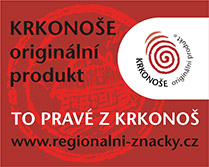Geomorphology
The realm of frost, ice and the wind
Geologically speaking, Krkonoše is in essence an ancient mountain range, but its geomorphological evolution and transformation only came about during the Tertiary and Quaternary periods. The oldest surviving remnants of such undulation in the landscape are aligned Tertiary surfaces (peneplains and etchplains), taking the form of two large plateaus of the western and eastern Krkonoše Mountains. The emergence of the mountains through alpine orogeny in the Tertiary era led to massive river erosion. Water courses started to deepen through the reverse erosion in occurrence and split the mountains' surface into spurs in Krkonoše and today's rugged network of deep river valleys. However, there are great differences in the modelling of the northern slopes of Krkonoše and those to the south. Most evidence comes from the lowest geological formation – the Quaternary. During several alternating glacial and interglacial periods, the higher altitudes of Krkonoše were transformed into glacial cirques, névés, troughs and several glacial valleys, e.g. those called Labský důl and Obří důl. Evidence of recurring glaciation in some parts of the mountains is in the form of glacial moraines and lakes, e.g. Wielki Staw and Mały Staw. Glacial, frost and river erosion also participated in developing the typical pyramidal shape of Sněžka mountain top. The highest mountain ridges never experienced glaciation but were exposed to the actions of frost, ice, snow and wind, which led to the emergence of a unique collection of land contours determined by periods of frost-sorting, one that is unmatched by other medium-sized European mountains. Cryoplanation terraces, frost soil, tors and rock walls, hummocks, stone garlands, ploughing boulders, periglacial scree and mounds formed by solifluction all make up the geodiversity for which the mountains are renowned.









